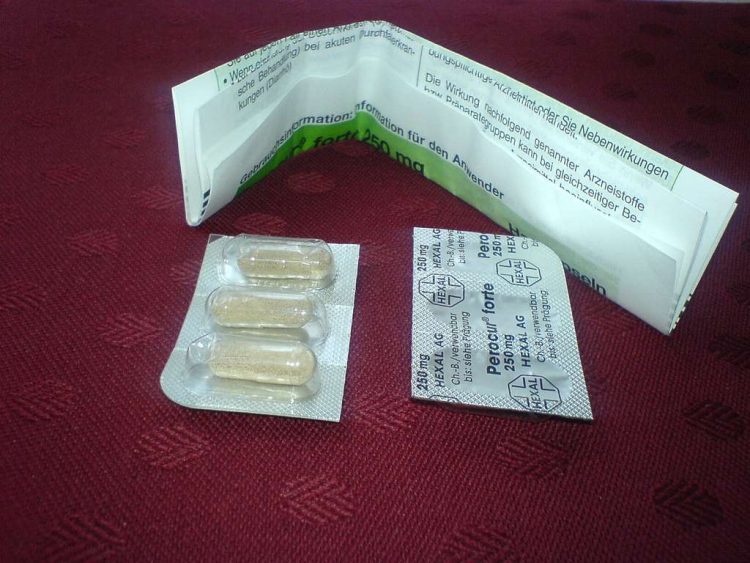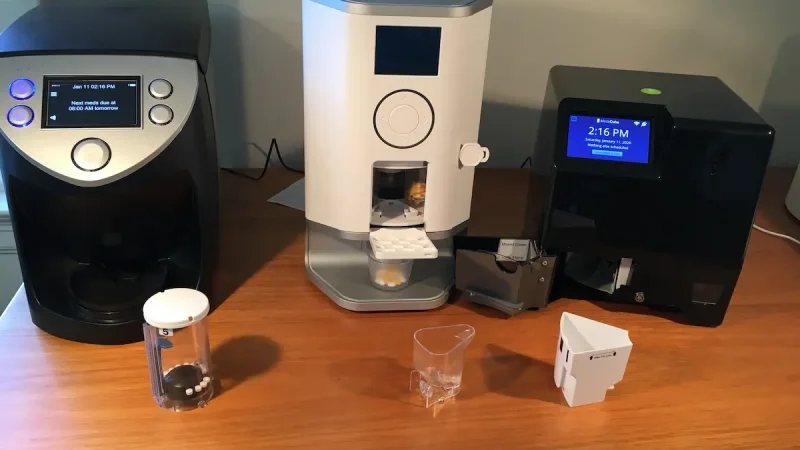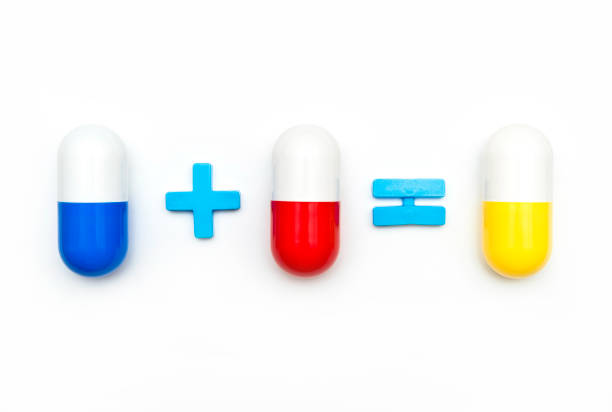Tercian Medication: Overview, Uses, Side Effects, and More

Primarily used in the treatment of mental health disorders, Tercian plays a crucial role in managing symptoms associated with various psychiatric conditions. This article will explore Tercian in-depth, covering its uses, side effects, mechanisms of action, dosage guidelines, and other essential information for both patients and healthcare providers.
What is Tercian (Cyamemazine)?
Tercian is the commercial name for cyamemazine, a first-generation antipsychotic medication used to treat a variety of psychiatric conditions, such as schizophrenia, anxiety, and agitation. It belongs to a class of drugs known as phenothiazines, which work by affecting the balance of chemicals in the brain. Cyamemazine works primarily by blocking the action of dopamine at certain receptors in the brain, particularly the D2 receptors.
First-generation antipsychotics like Tercian are often referred to as typical antipsychotics. While these medications can be effective in managing symptoms such as delusions, hallucinations, and severe agitation, they also come with a range of potential side effects.
Mechanism of Action
Tercian, as an antipsychotic, works by inhibiting the dopamine receptors in the brain. Dopamine is a neurotransmitter involved in mood regulation, motivation, and reward. In conditions such as schizophrenia, the dopamine system may become overactive, leading to symptoms like hallucinations and delusions. By blocking dopamine transmission in certain areas of the brain, Tercian helps reduce these symptoms.
However, the medication is not selective to just dopamine receptors and may also influence other neurotransmitter systems, including serotonin and histamine. This broader action contributes to its calming and sedative effects, which can be beneficial for patients with agitation or severe anxiety.
Uses of Tercian
Tercian is prescribed to treat a range of mental health disorders, primarily those involving psychotic symptoms. Its main uses include:
1. Schizophrenia
Schizophrenia is a severe psychiatric disorder characterized by symptoms like hallucinations, delusions, disorganized speech, and social withdrawal. Tercian is often used to control these symptoms, helping individuals manage the condition and improve their quality of life. It is generally used in combination with other therapies, such as cognitive-behavioral therapy (CBT) or supportive counseling.
2. Acute Agitation and Psychosis
In some cases, Tercian is used for the short-term management of acute agitation and psychosis, which can be a result of various conditions such as substance abuse, severe anxiety, or a mood disorder. The calming effect of Tercian can help reduce agitation and promote a sense of stability in these patients.
3. Severe Anxiety
Tercian can also be prescribed for patients suffering from severe anxiety that does not respond to traditional anxiolytics. The sedative properties of the medication help in alleviating the heightened emotional response associated with anxiety disorders.
4. Bipolar Disorder
In some cases, Tercian is used in managing the symptoms of bipolar disorder, especially during manic episodes where symptoms like severe agitation, impulsivity, and mood swings are prevalent. It helps to calm the individual and may be used alongside mood stabilizers.
5. Other Off-Label Uses
Tercian may also be prescribed off-label for other conditions, such as severe depression, insomnia, or nausea related to certain treatments like chemotherapy. Off-label use is when a medication is used in a way that has not been officially approved by regulatory bodies but is still considered to have therapeutic benefits.
Dosage Guidelines
The dosage of Tercian (cyamemazine) depends on the specific condition being treated, the severity of the symptoms, and the individual patient’s needs. The typical starting dose for adults is low, gradually increasing as necessary. The medication is often taken in tablet form, but it can also be administered through an injectable form, especially in cases of acute psychosis or agitation.
General Dosage Recommendations:
- Adults: The typical oral dose for adults ranges from 25 mg to 100 mg per day, divided into two to three doses. The dosage can be adjusted based on the patient’s response to the medication and any side effects.
- Children and Adolescents: The medication is usually not recommended for children under the age of 12. In cases where it is prescribed, the dosage would be adjusted according to the child’s weight and the severity of the condition.
Injectable forms of Tercian are often administered in settings like hospitals or psychiatric clinics, where the patient can be closely monitored for any adverse reactions. Injectable doses generally begin at 50 mg and may increase based on patient needs.
It is crucial to follow the prescribed dosage and never adjust the medication without consulting a healthcare provider. Abrupt discontinuation of Tercian can lead to withdrawal symptoms or a relapse in psychiatric symptoms.
Side Effects of Tercian
Like all medications, Tercian can cause side effects, ranging from mild to severe. These effects depend on individual patient factors, including dosage, duration of treatment, and overall health. Some common and serious side effects associated with Tercian include:
Common Side Effects:
- Drowsiness: One of the most common side effects of Tercian is sedation or drowsiness, which can be both a beneficial and adverse effect, depending on the situation.
- Dry Mouth: Patients may experience dry mouth or a decreased ability to salivate, which can lead to discomfort.
- Weight Gain: Some individuals may notice weight gain during treatment due to changes in appetite or metabolism.
- Dizziness or Lightheadedness: This may occur, particularly when standing up quickly, due to its effect on blood pressure.
- Constipation: Tercian can lead to gastrointestinal issues, including constipation, as it affects the gut’s motility.
Serious Side Effects:
- Extrapyramidal Symptoms (EPS): These are movement-related side effects, including tremors, rigidity, and slow movements. EPS are more common with typical antipsychotics like Tercian compared to newer, atypical antipsychotics.
- Tardive Dyskinesia: A long-term side effect, tardive dyskinesia causes involuntary movements, particularly of the face and mouth. It can be irreversible in some cases, making it a serious concern for long-term use.
- Neuroleptic Malignant Syndrome (NMS): This rare but life-threatening condition involves symptoms like high fever, muscle rigidity, confusion, and autonomic instability. NMS requires immediate medical attention.
- Cardiovascular Issues: Some patients may experience a sudden drop in blood pressure, leading to dizziness or fainting. In rare cases, it can cause heart arrhythmias or other cardiovascular issues.
- Severe Allergic Reactions: Though rare, some individuals may experience an allergic reaction to Tercian, including skin rashes, swelling, or difficulty breathing.
Patients who experience any of these serious side effects should contact their healthcare provider immediately or seek emergency medical attention.
Drug Interactions
Tercian may interact with other medications, and these interactions can either reduce the effectiveness of Tercian or increase the risk of adverse side effects. Some known interactions include:
- Other CNS Depressants: Combining Tercian with other sedatives, such as benzodiazepines or alcohol, can amplify sedative effects and increase the risk of drowsiness, dizziness, and impaired motor function.
- Antihypertensive Drugs: Medications that lower blood pressure, such as certain diuretics or beta-blockers, can interact with Tercian and enhance its blood pressure-lowering effects.
- Antidepressants: Certain antidepressants, especially tricyclic antidepressants, may interact with Tercian, potentially leading to an increased risk of side effects like sedation or heart-related issues.
- Anti-seizure Medications: Anticonvulsants such as phenytoin can affect the metabolism of Tercian, potentially altering its effectiveness.
It is important to inform your healthcare provider about all medications, including over-the-counter drugs, supplements, and herbal remedies, that you are taking before starting Tercian.
Monitoring During Treatment
Due to the potential for side effects, particularly extrapyramidal symptoms and tardive dyskinesia, it is crucial to undergo regular monitoring while on Tercian. This may include:
- Regular Check-ups: Routine follow-up appointments with your doctor to assess the effectiveness of the medication and monitor any adverse reactions.
- Blood Pressure Monitoring: To ensure that blood pressure remains stable, particularly during the initial stages of treatment.
- Movement Assessments: Doctors may assess for any early signs of movement disorders, particularly with long-term use.
Conclusion
Tercian (cyamemazine) is a potent antipsychotic medication primarily used to manage psychotic symptoms and other mental health disorders such as schizophrenia, acute agitation, and severe anxiety. Like other first-generation antipsychotics, it can be highly effective in controlling symptoms but also carries the risk of significant side effects, particularly with long-term use.
Patients prescribed Tercian should be monitored closely for any adverse reactions, and it is essential to follow the prescribed dosage to minimize risks. As with any psychiatric treatment, therapy should be individualized, and the benefits of the medication should always be weighed against the potential risks. Regular consultations with a healthcare provider are key to ensuring that the treatment





